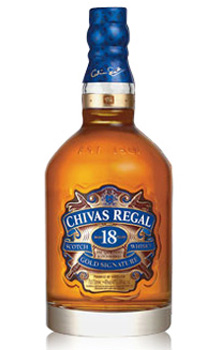If I asked you to think of a dog, what comes to mind? What color is it? What breed? Does it bark a lot?
That’s the question when someone asks about whisky. Saying ‘whisky’ is like saying ‘dog.’ At the top level, whisky is a brown spirit distilled from grain. Any cereal grain can be used, and it can be produced anywhere in the world. And just as there are many different breeds of dogs, there are many different types of whisky. Bulldogs, terriers, hounds… If ‘whisky’ is ‘dog’, ‘Scotch’ is ‘poodle’ – and just as different poodles have different personalities, different Scottish whiskies have different personalities.

An Example of a Single Malt Scotch Whisky
There are laws that govern whisky making all over the world. In Scotland, the governing body is the Scotch Whisky Association. SWA got their start in 1917 as The Whisky Association, and incorporated as SWA in 1960. The SWA lists their main functions as protecting the integrity of Scotch Whisky worldwide, promoting responsible attitudes to alcohol consumption, promoting Scotch Whisky as a quality product made from natural raw materials and representing the industry’s interests at governmental level both at home (Scotland) and abroad. This is about the same around the world – the idea is for you to taste whisky from Scotland, like it, and want more (and we do!).
An Example of a Blended Malt Scotch Whisky
OK, so how do they do it? Is just making it in Scotland enough? Not really. The SWA updated their rules in 2009 to say that Scotch Whisky means whisky:
- Which has been produced at a distillery in Scotland from water and malted barley (to which only whole grains of other cereals may be added), all of which have been processed at that distillery into a mash, converted at that distillery to a fermentable substrate only by endogenous enzyme systems and fermented at that distillery only by the addition of yeast.
- Which has been distilled at an alcoholic strength by volume of less than 94.8% so that the distillate has an aroma and taste derived from the raw materials used in, and the method of, its production.
- Which has been wholly matured in an excise warehouse in Scotland in oak casks of a capacity not exceeding 700 litres, the period of that maturation being not less than three years
- Which retains the colour, aroma and taste derived from the raw materials used in, and the method of, its production and maturation, and to which no substance other than water and plain caramel colouring may be added.
OK, so, make it and mature it in Scotland from barley and other grains? Is that it? Yes! To be ‘Scotch’, that’s it. From there, we get into the question of blending, terms like ‘single malt’, and more.

An Example of a Single Grain Scotch Whisky
First is the Age Statement. Many bottles of whisky have a number on the front, that we call the age statement. This age statement tells us the youngest whisky in the bottle. A whisky is considered to be aging in those oak casks, and not in the bottle. So, for example, if I have a 750ml bottle and 749ml of it spent 15 years in an oak cask and 1ml spent 12 years in an oak cask, the age statement on the bottle will be 12 years – no matter how long the whisky has sat in the bottle. If I put a 15 year old whisky and a 12 year old whisky into the same bottle, is that considered blended whisky? Not exactly.
Lets look at the phrase “Single Malt Scotch Whisky” – made up of 4 words. ‘Whisky’ tells us it’s a brown spirit distilled from grain. ‘Scotch Whisky’? Look above. ‘Malt Scotch whisky’? That’s Scotch whisky made from only malted barley (no other cereals – remember we can use any and still call it Scotch). ‘Single’? That’s malt Scotch whisky that was distilled at one, single distillery.

An Example of a Blended Scotch Whisky
In fact, the SWA lists 5 different categories of whisky to be called Scotch; Single Malt, Single Grain, Blended, Blended Malt and Blended Grain. The word ‘blended’ is a bit of a misnomer, tho, as all of these categories can be blended. We’ll cover blending in another post, but just know it’s a good thing and it’s common practice – even those high-priced ‘single malts.’ Read more about those categories here.

An Example of a Blended Grain Scotch Whisky
Now go out, raise a glass, and enjoy your favorite Scotch Whisky!